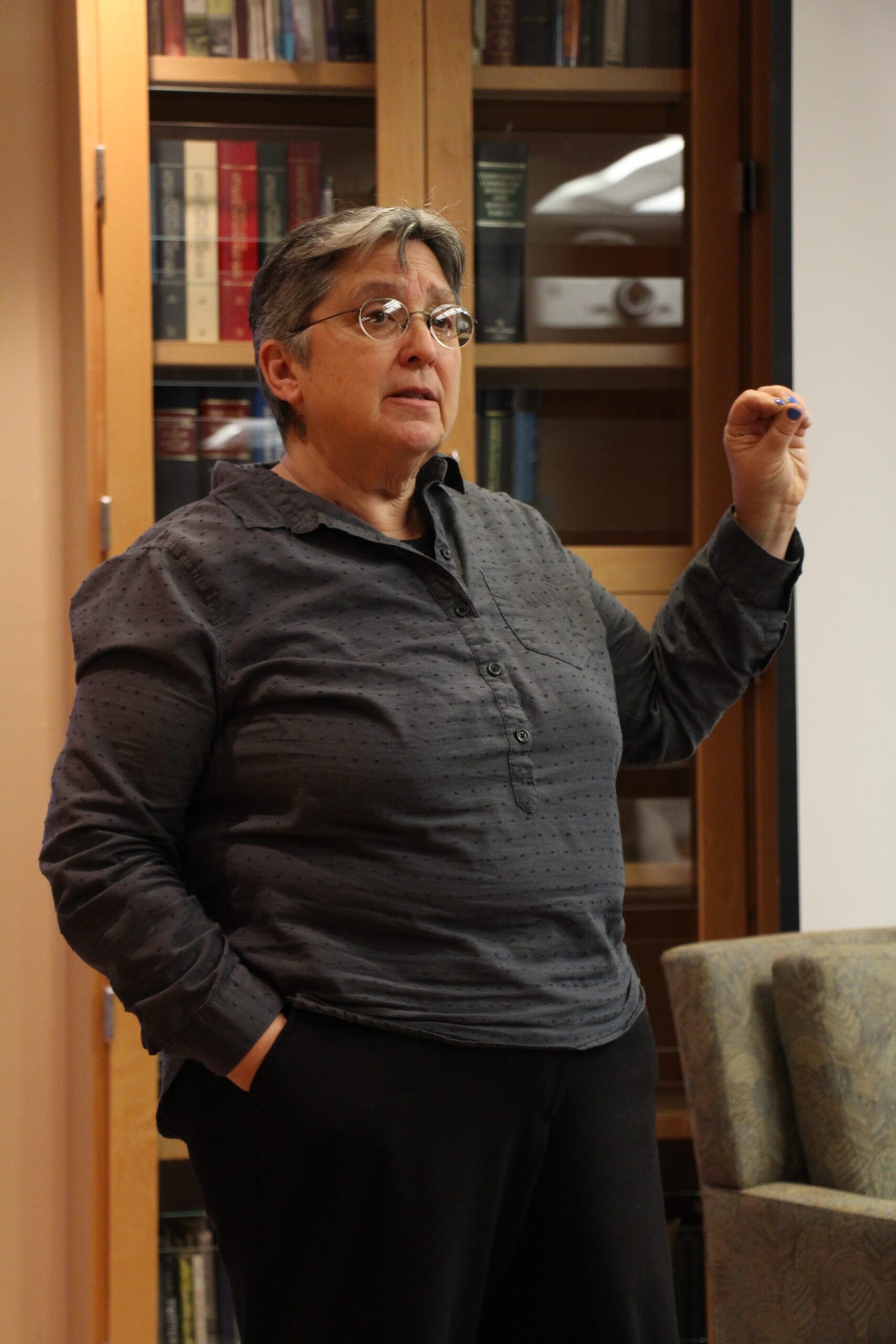‘Dawnland’ confronts brutality toward Wabanaki
November 30, 2018
Bowdoin College sits on stolen land. The area campus occupies today was once part of the Wabanaki Confederacy and was integral to the cultural identity and survival of a network of indigenous tribes. When Europeans colonists arrived, they embarked on a program of erasure and cultural genocide that continues today.
Adam Mazo, the co-director and producer of the documentary film “Dawnland,” explained this history to a room of students and community members in a discussion on Thursday afternoon.
“It’s especially important for people in Wabanaki territory to witness the testimony,” said Mazo. “To witness the pain and the perseverance and the resilience of Wabanaki people and to understand their own role in ongoing colonialism and the process of decolonization and to understand that Wabanaki people are still here.”
 Mindy Leder
Mindy LederMazo was joined by Penthea Burns, co-director of the Maine-Wabanaki REACH program, an organization dedicated to advancing the cultural and social well-being of indigenous people in Maine.
Following the afternoon discussion, Mazo and Burns answered questions from students and community members in Kresge Auditorium at an evening screening of “Dawnland,” which was released earlier this year. The documentary details the work of the Truth and Reconciliation Commission (TRC), a board of five commissioners established by the Maine State government in 2012 to gather information about the separation of Wabanaki children from their families and tribal heritage.
Records from the TRC are housed at Bowdoin in Hawthorne Longfellow Library in the George J. Mitchell Special Collections. Some items from the archive were on display in the Nixon Lounge on Thursday afternoon.
Mazo hopes that “Dawnland,” which was released this March, will help educate viewers about the history of the state’s indigenous population and the truth-finding mission of the TRC, which was the first commission of its kind to receive governmental support.
According to Burns, this educational goal has the potential to change American society on a fundamental level.
“Until we reckon with what happened, with who we are as a people that benefit from this genocide, how even slavery was facilitated by the process of colonization, we don’t know how to repair, how to coexist,” Burns said. “The degree of polarization that we have in the country today is directly related to that. The way we are hurting the earth is directly related to that … Those things hurt people, and we don’t have to live that way.”
Within Wabanaki communities, reception to the film has been warm. Mazo believes “Dawnland” will help validate the experiences of individuals who have suffered as a result of family separation policies in indigenous communities across the country.
“We’ve gone around the country showing the film and hearing from native people all over the place: ‘this is our story too. This is our community,’” he said. “We’re emphasizing that this story of indigenous child separation is unfortunately universal.”
In addition to the afternoon discussion and evening screening, Mazo and Burns spoke to Contemporary Issues of Native North America, an Anthropology class. Burns praised the class’s curiosity in the history of the TRC and the “informed” questions posed by students.
“The more that [Wabanaki history] is made visible, the more that people are going to want to learn more, ask more questions. The visibility is the first thing that we can do,” Burns said.
Bridget Hoke ’20 attended the “Dawnland” screening and was struck by the juxtaposition of footage of the Maine landscape and the stories of oppression and abuse that film chronicled.
“It really recontextualized the landscape,” Hoke said. “I have a colonizer mindset about Maine land as someone who moved here.”
Though “Dawnland” is emotional and at times heavy, Burns and Mazo make a case for hope for the future of indigenous rights. They encouraged students to get involved by educating themselves and calling politicians in their state to advocate for the rights of indigenous people.
“If you like the film, if you’re moved by the film, call up you high school social studies teacher and tell them to check out the film and share it with their students to make sure that everyone in Maine and across the country knows about this historical process that happened,” Burns said.
Wabanaki translates roughly to “people of the dawn,” referring to the fact that Maine, as the easternmost land in the United States, is the first place the sun touches at daybreak. It is therefore only natural that movement for indigenous truth and resolution, like the breaking of the day, will begin in Maine.

Comments
Before submitting a comment, please review our comment policy. Some key points from the policy: